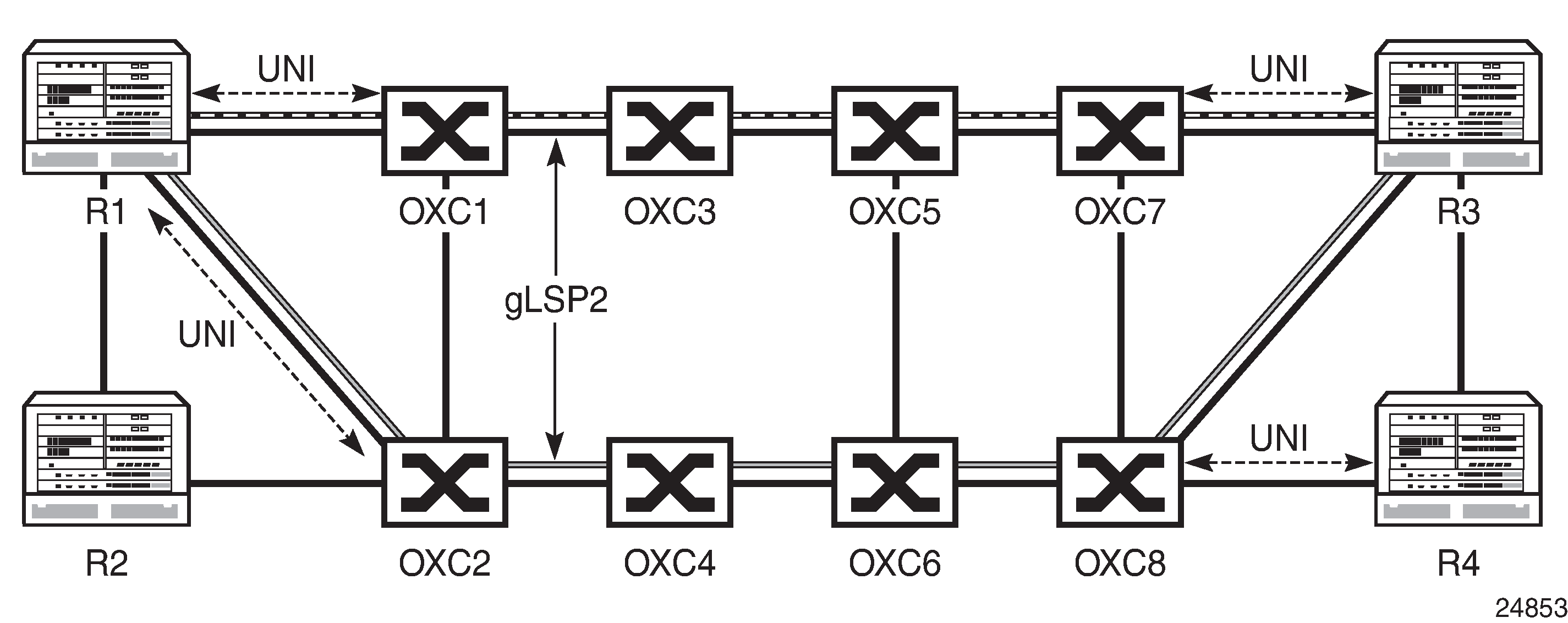The objective of this application is to ensure optical network path diversity for primary/backup paths of an overlay IP network. It therefore aims to resolve situations where the UNI-C router has no topological visibility of the optical network, and to allow the router to indicate that paths have to be either co-routed or avoid specific optical nodes or links along a path.
Route diversity for LSPs from single homed UNI-C router and dual-homed UNI-C router is a common requirement in optical transport networks. Dual homing is typically used to avoid a single point of failure (for example, the UNI link or OXC) or to allow two disjoint connections to form a protection group.
For the dual-homing case, it is possible to establish two connections from the source router to the same destination router where one connection is using one UNI link to, for example, OXC1 and the other connection is using the UNI link to OXC2. To avoid single points of failure within the optical network, it is necessary to also ensure path (gLSP) diversity within the provider network to achieve end-to-end diversity for the two gLSPs between the two routers.

As the two connections are entering the provider network at different OXC devices, the OXC device that receives the connection request for the second connection needs to be capable of determining the additional path computation constraints such that the path of the second LSP is disjointed with respect to the already established first connection entering the network at a different PE device.